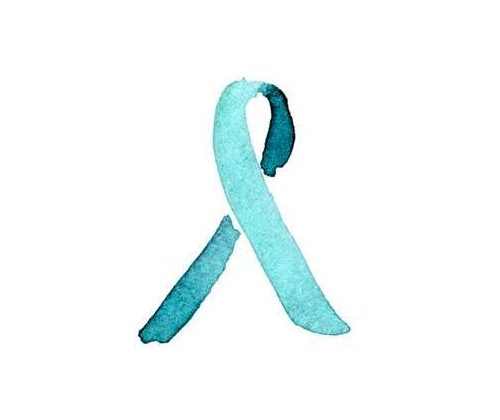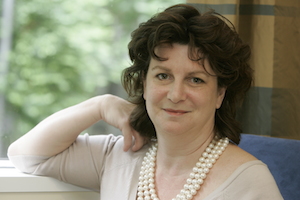Your questions about Cervical Health answered by an expert
Okay, ladies, it’s time to talk about something a bit more serious. Cervical health is something that we don’t necessarily think about in everyday life, but it’s so important to be aware of this health issue and the risks associated with it. In fact, cervical cancer is the fourth most common cancer in the world among women, with over 1,400 cases diagnosed each day. It’s also one of the leading causes of cancer death among women in Hong Kong, so we all need to ensure that we know what to look out for and how to prevent it.
There’s no need to be scared, but all sexually active woman should be in the know about the risks. Cervical pre-cancer has no obvious symptoms, and with many of us here at the Sassy office feeling unsure about what to be aware of, we decided to ask leading local gynaecologist Dr. Lucy Lord some questions. Read on to find out all the basics on what you need to know about cervical cancer and how we can protect ourselves.
Why is it important for women to be aware of cervical cancer?
Two reasons: it’s common and almost entirely preventable. More than that, I think any cervical cancer death today should be considered either a failure in the proper education of women or a failure to provide an adequate screening and prevention programme.
That said, cervical cancer prevention has made great advances since I started practicing over 30 years ago. Cervical cancer has gone from being misunderstood, unpreventable, largely undetectable and commonly fetal cancer, to one of the most preventable and treatable cancers. A real success of medical research and innovation. This success has come largely from an understanding of the role of HPV in both the causation of pre-cancerous and cancerous changes in the cervix. The prevention of HPV from causing cervical cancer is now the mainstay of cervical cancer death prevention.
However, a cervical cancer awareness survey last year that covered 300 women in Hong Kong produced the startling result that even though there was a good level of awareness of cervical cancer (83%) and of HPV (65%), only 38% of women were aware of the link between the two.
What do women need to know about cervical cancer?
Well, a good place to start is with the Human Papillomavirus – what we call HPV – which causes more than 99% of cases of cervical cancer. There are over 100 types of HPV, but HPV 16 and HPV 18 in particular cause 70% of cervical cancer.
Most women who are sexually active are very likely to have contracted HPV at some point in their life. Globally, the figure runs at about 80%. The good news is that most HPV infections produce no symptoms and are cleared by the body’s natural immune system within two years. The bad news is that in some women, the HPV virus remains stay in the body and may lead to cervical cancer.
What should ladies look out for?
The thing to remember is that there are often no symptoms of HPV infection or pre-cancer. And when symptoms do occur, it is usually when the cancer is usually relatively advanced and difficult to treat. So it is important for women to have cervical cancer screenings, which include high-risk HPV tests regularly, so they can understand their risk.
How can they prevent it?
In my opinion, the two key strategies are vaccination and screening. Vaccination is most important for girls who have not yet had sexual intercourse, but it can also be helpful for sexually active women.
Adequate screening is the key to prevention and regular Pap Smears have been shown conclusively to reduce the risk of cervical cancer. However, a single Pap Smear may miss up to 50% of cervical cancers, although regular Pap Smears can significantly reduce this failure rate. An even better solution is to conduct what we call co-testing. That means combining a Pap Smear with testing for the HPV virus, which can make a single smear much more accurate.
At our clinic, because of our demographic, we recommend co-testing. This is because many of our patients relocate around the region, so it can be difficult for them to access proper care. A normal Pap Smear with a negative HPV test will give patients the assurance that they don’t have cervical cancer or the pre-cancerous changes with over 99% accuracy. The Pap Smear looks for changes in the cells of the cervix and is recommended every 1-3 years. It’s easy, taking just a few minutes and it isn’t painful, but it can miss up to 50% of cases of pre-cancer and cancer.
A high-risk HPV test is different. It looks for the 14 high-risk HPV types that can cause cervical cancer, and can detect the risk of pre-cancer even before changes appear in the cells of the cervix. Some tests identify HPV 16 and 18 individually. Women with HPV 16 or HPV 18 are 35 times more likely to develop cervical pre-cancer than those without HPV.
The bottom line is that women can prevent themselves from falling victim to cervical cancer by talking to their doctors and friends about cervical cancer screenings, potentially with additional high-risk HPV test. Making an appointment for a cervical cancer screening test is the first step!
What should they do with the results?
Every woman should learn what their results mean so they can be informed when discussing next steps with their doctor.
![]()
If you haven’t had a Pap Smear or a high-risk HPV test, then we would recommend scheduling one in ASAP. You can schedule one with Dr. Lucy Lord by booking an appointment with any GP at Central Healthcare. They have five in-house GPs who can perform Pap Smears and co-testing for HPV – email [email protected] or call 2824 0822 for an appointment.
There are other public and private services available around Hong Kong for Pap Smears – see more information on Cervical Screening in Hong Kong here and look out for our article on Sexual Health in Hong Kong coming soon.
Featured image sourced via Pinterest





 Eat & Drink
Eat & Drink



 Travel
Travel



 Style
Style



 Beauty
Beauty



 Health & Wellness
Health & Wellness



 Home & Decor
Home & Decor



 Lifestyle
Lifestyle


 Weddings
Weddings





